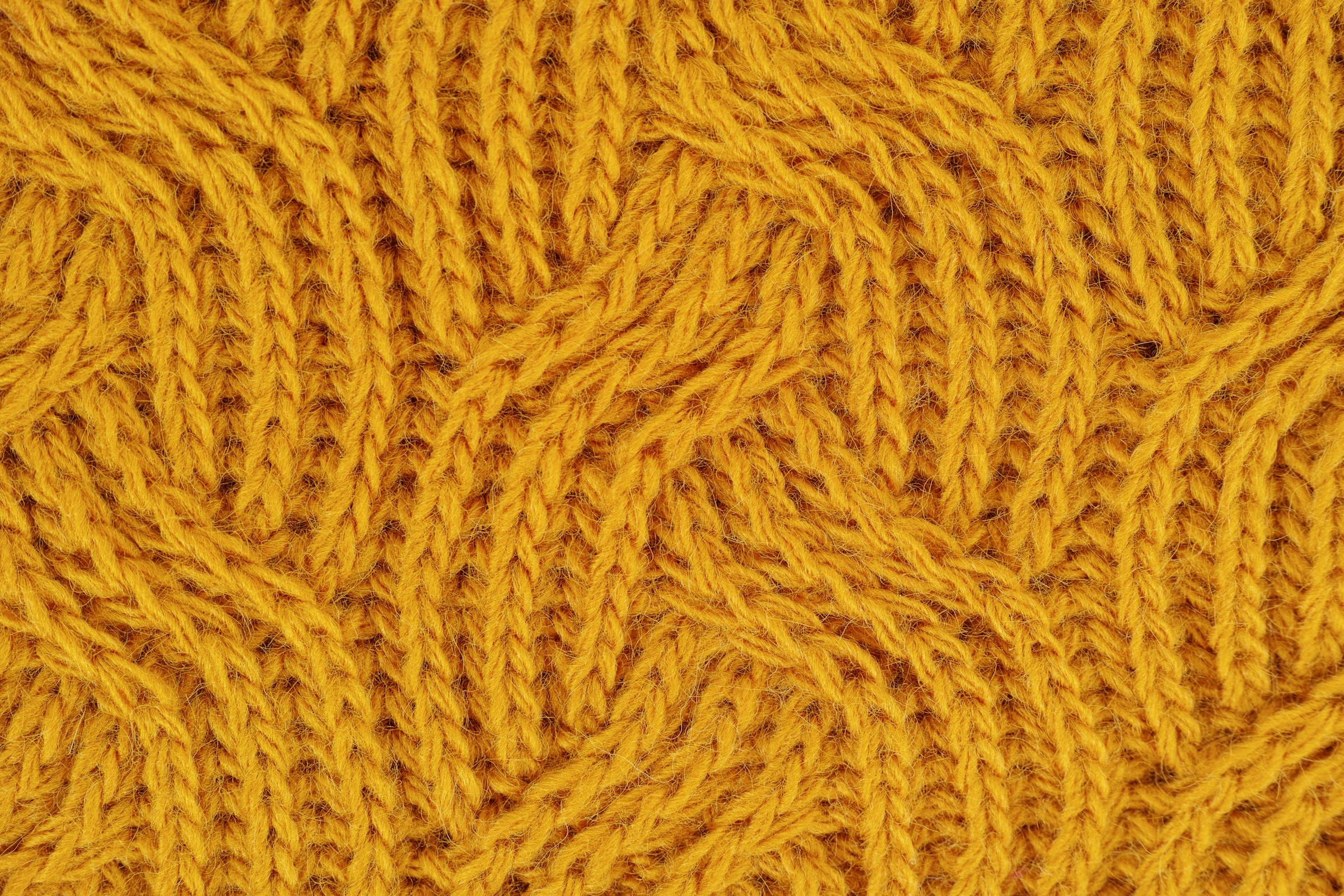Diagonal Ribbing

Ribbing is one of the first stitch patters that we learn. A 1x1 or 2x2 rib makes a great edge for a variety of projects; the latter is also a useful design for an accessory that needs stretchiness (such as a hat or a sock, or even a simple sweater.) Sometimes, however, we want something a bit more unexpected.
The solution? Knit a diagonal rib!
This sounds much more difficult to execute than it actually is. Choose your rib width and knit a row or two. Then move the pattern over one stitch and knit a row or two again. Continue in this way and you will have edged your ribbing on the bias. The only problem with knitting it this way is that it takes some concentration to remember how to move the pattern over; it helps to grab some graph paper and chart it out before actually committing to yarn and needles.
However, there is a much easier way to knit a diagonal rib. Here’s the secret: we can use math to make our job much easier. Choose the rib width as before, but cast on a stitch more or less than a perfect repeat. For example, cast on a 3x3 rib over a multiple of 6, but add a stitch, say 25 instead of 24 stitches. instead of on a perfectly divisable number of stitches. Join to work in the round, and you will find that the second row of knitting is “off” by one stitch to the right. The third row will be again off by one, and this offset will create the diagonal rib all by itself. Want the ribbing to lean in the other direction? Cast on a multiple of 6 + 5 extra stitches; for example 35 instead of 36.
This type of ribbing in the round is just one example of what designer Cecilia Campchiaro calls “Sequence Knitting,” and its fascinating to watch the design spill out after you knit the pattern on autopilot. Kerry Bogart uses this technique in her “Tasseography Cowl,” which uses the aforementioned 3x3 knit over 241 stitches, adding an extremely simple lace detail to the ribbing. The results are beautiful, and the knitting is almost completely brain-free, perfect for a project to work on while watching television or meeting a friend for coffee.
Swatch up a few diagonal ribs and see for yourself. Use the mathematical model or graph paper to help you design your own stitch patterns. You might find something worth sharing!
Disclaimer: I am not affiliated with Kerry Bogart or with Cecilia Campochiaro. I purchased patterns with my own money.
The solution? Knit a diagonal rib!
This sounds much more difficult to execute than it actually is. Choose your rib width and knit a row or two. Then move the pattern over one stitch and knit a row or two again. Continue in this way and you will have edged your ribbing on the bias. The only problem with knitting it this way is that it takes some concentration to remember how to move the pattern over; it helps to grab some graph paper and chart it out before actually committing to yarn and needles.
However, there is a much easier way to knit a diagonal rib. Here’s the secret: we can use math to make our job much easier. Choose the rib width as before, but cast on a stitch more or less than a perfect repeat. For example, cast on a 3x3 rib over a multiple of 6, but add a stitch, say 25 instead of 24 stitches. instead of on a perfectly divisable number of stitches. Join to work in the round, and you will find that the second row of knitting is “off” by one stitch to the right. The third row will be again off by one, and this offset will create the diagonal rib all by itself. Want the ribbing to lean in the other direction? Cast on a multiple of 6 + 5 extra stitches; for example 35 instead of 36.
This type of ribbing in the round is just one example of what designer Cecilia Campchiaro calls “Sequence Knitting,” and its fascinating to watch the design spill out after you knit the pattern on autopilot. Kerry Bogart uses this technique in her “Tasseography Cowl,” which uses the aforementioned 3x3 knit over 241 stitches, adding an extremely simple lace detail to the ribbing. The results are beautiful, and the knitting is almost completely brain-free, perfect for a project to work on while watching television or meeting a friend for coffee.
Swatch up a few diagonal ribs and see for yourself. Use the mathematical model or graph paper to help you design your own stitch patterns. You might find something worth sharing!
Disclaimer: I am not affiliated with Kerry Bogart or with Cecilia Campochiaro. I purchased patterns with my own money.
You Should Also Read:
Travel Knitting
Math For Knitters

Related Articles
Editor's Picks Articles
Top Ten Articles
Previous Features
Site Map
Content copyright © 2023 by Korie Beth Brown, Ph.D.. All rights reserved.
This content was written by Korie Beth Brown, Ph.D.. If you wish to use this content in any manner, you need written permission. Contact Korie Beth Brown, Ph.D. for details.







